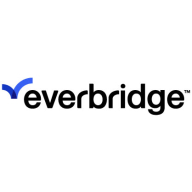

Find out what your peers are saying about PagerDuty, Splunk, Atlassian and others in IT Alerting and Incident Management.
| Product | Market Share (%) |
|---|---|
| xMatters | 6.4% |
| OnSolve Platform for Critical Event Management | 2.1% |
| Other | 91.5% |

| Company Size | Count |
|---|---|
| Small Business | 4 |
| Midsize Enterprise | 2 |
| Large Enterprise | 24 |
The OnSolve Platform for Critical Event Management is a comprehensive solution designed to help organizations effectively manage critical events. Its primary use case is to provide real-time situational awareness, enabling organizations to proactively respond to and mitigate potential threats.
The platform offers a range of valuable functionality, including event monitoring, alerting, and incident management. It aggregates data from various sources, such as social media, weather updates, and internal systems, to provide a holistic view of the current situation. This allows organizations to quickly assess the impact of an event and take appropriate actions.
The platform also enables automated alerting and notification, ensuring timely dissemination of critical information to relevant stakeholders. It supports multi-channel communication, including SMS, voice calls, emails, and mobile app notifications, to reach individuals across different devices and locations. This helps organizations rapidly communicate with employees, customers, and other key stakeholders during emergencies.
Furthermore, the platform facilitates incident management by providing tools for task assignment, collaboration, and tracking. It allows organizations to create response plans, allocate resources, and monitor progress in real-time. This streamlines the incident response process, leading to faster resolution and reduced impact on operations.
xMatters, an Everbridge company, is a service reliability platform that helps DevOps, SREs, and operations teams rapidly deliver products at scale by automating workflows and ensuring infrastructure and applications are always working. The xMatters code-free workflow builder, adaptive approach to incident management, and real-time performance analytics all support a single goal: deliver customer happiness.
To learn more, request a demo.
We monitor all IT Alerting and Incident Management reviews to prevent fraudulent reviews and keep review quality high. We do not post reviews by company employees or direct competitors. We validate each review for authenticity via cross-reference with LinkedIn, and personal follow-up with the reviewer when necessary.